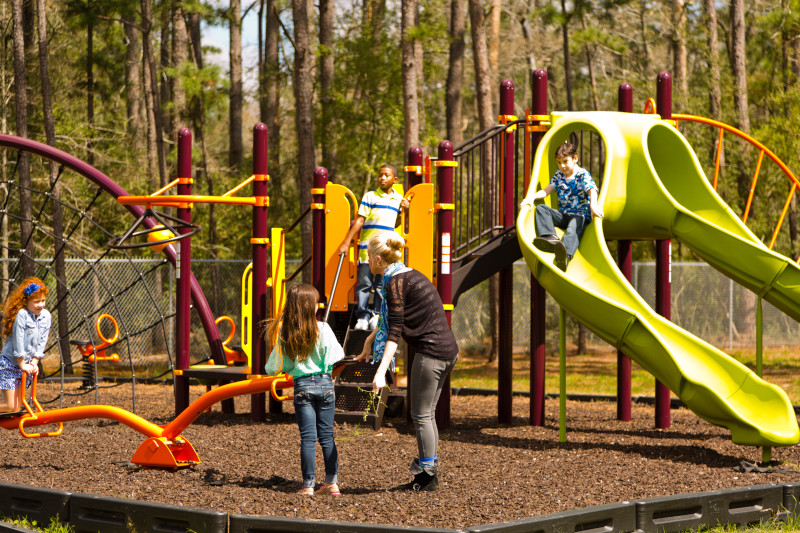Keep the children on your playground safe

Of all the spaces in and around a school building, a playground is probably one of the more dangerous ones. According to the Consumer Product Safety Commission, more than 200,000 emergency room visits annually in the United States are related to playground injuries.
In honor of National Playground Safety Awareness Week this week, CM Regent is sharing three important best practices for keeping the children on your playgrounds safe.
Use active supervision when children are on the playground
According to the Consumer Product Safety Commission, providing active supervision is one way to keep children safe on playgrounds. Adult supervisors should position themselves so they can observe all students. More importantly, they should be aware that playground equipment is age specific and not all equipment is appropriate for all children who may use the playground. They should never leave students alone and should not distract themselves with electronic devices or conversations with other staff members.
Establish a preventive maintenance program
A preventive maintenance program helps ensure equipment is kept in peak operational state. When you maintain equipment, you can avoid costly repairs or replacing an item before it reaches its “end-of-service” life. Playground maintenance inspections can be performed by a member of your maintenance staff. They should check for and evaluate the following:
Physical wear/hazards
- Loose or missing hardware (bolts, nut cap, etc.).
- Open S-hooks. (Opening should not be greater than the thickness of a dime.)
- Swing components (hangers, chain eyelets, seat, etc.).
- Exposed concrete footings.
- Structures that are not securely anchored.
- Inadequate/displaced protective surfacing material, especially at slide discharges, beneath swings and overhead equipment.
- Projections/cracks in the slide bed.
- No more than two bolt threads exposed beyond a fastened nut.
- Rails do not spin freely (horizontal, parallel or overhead bars, etc.).
- Frayed/worn rope strands on climbing ropes or net climbers.
Environmental factors
- Plastic components degradation (slides, protective barrier, handles, etc.).
- Cracking/dry-rotting of rubber components.
- Paint film/protective coating failure (i.e., delaminate, rust, corrosion).
- Wood rot or splitting.
- Accumulation/pooling of water (i.e., within tube crawls, slides saddle, tires, seats).
- Insects (i.e., damage, nests).
User/accidental damage
- Protective surfacing material free of litter, broken glass, tree roots, rocks, etc.
- Vandalism/graffiti.
Bring in a Certified Playground Safety Inspector (CPSI)
CM Regent employs risk control consultants who are also CPSIs. These individuals can:
- Help you design a new playground, including choosing a proper surfacing material and determining which equipment is appropriate for different age groups.
- Perform playground inspections using Consumer Product Safety Commission public playground safety guidelines.
- Provide a free playground equipment audit for customers that have property coverage with CM Regent. Such an audit should be performed annually and when you install or modify equipment. It uses American Society for Testing and Materials international standards when making recommendations to address playground hazards.
A CPSI can provide you with expert recommendations for how you can make your playground the safest it can be. Contact Risk Control to learn more about how you can bring a Certified Playground Safety Inspector to your school.




